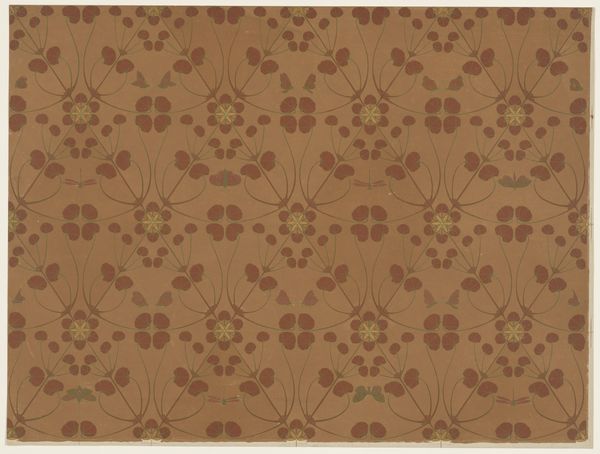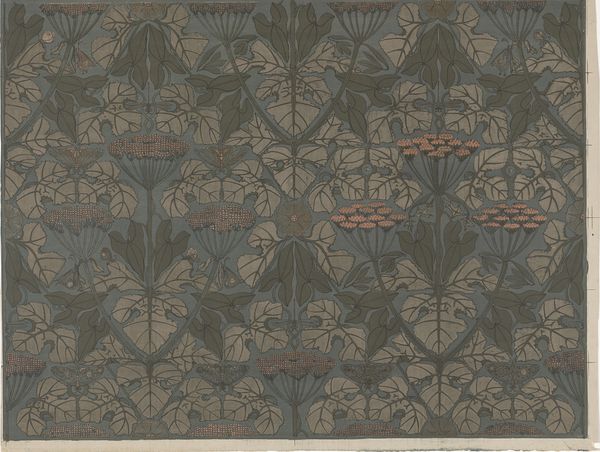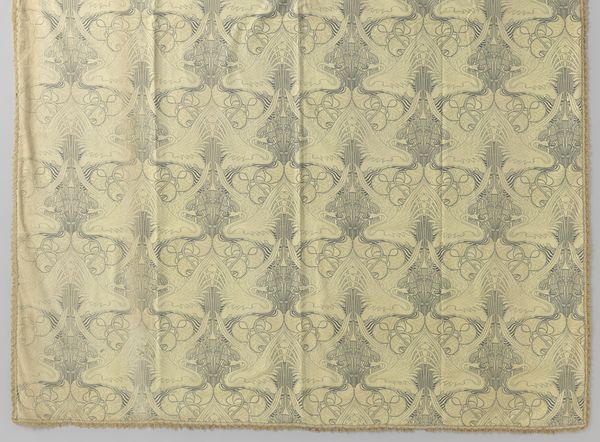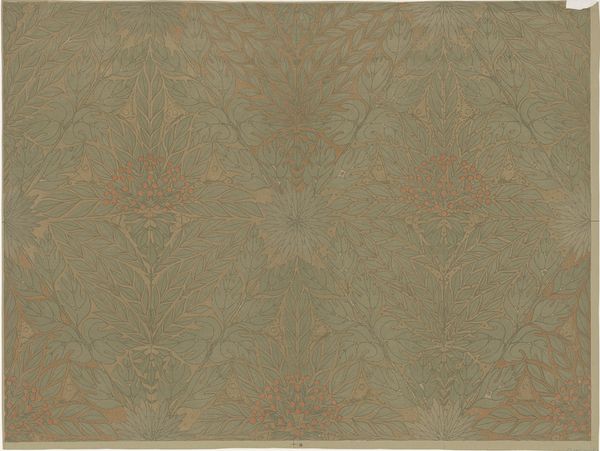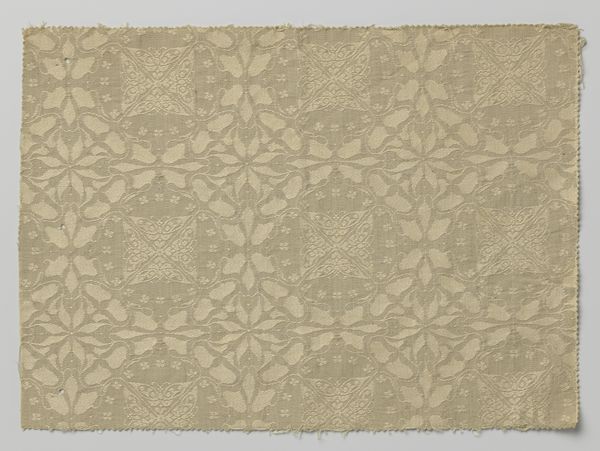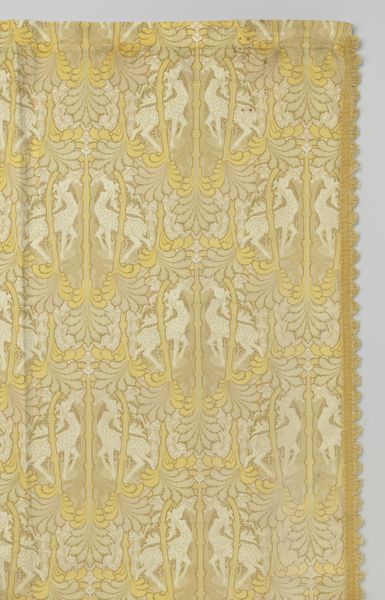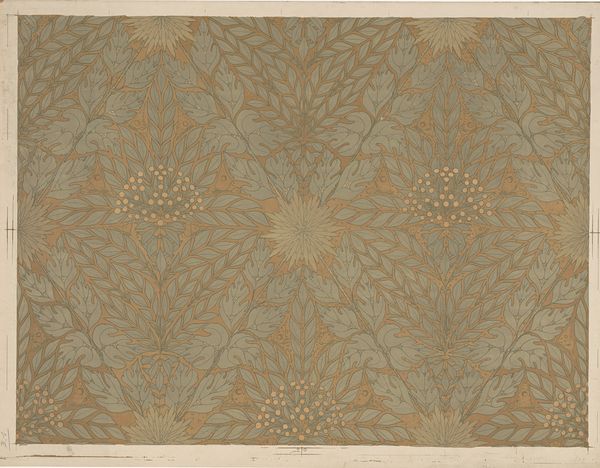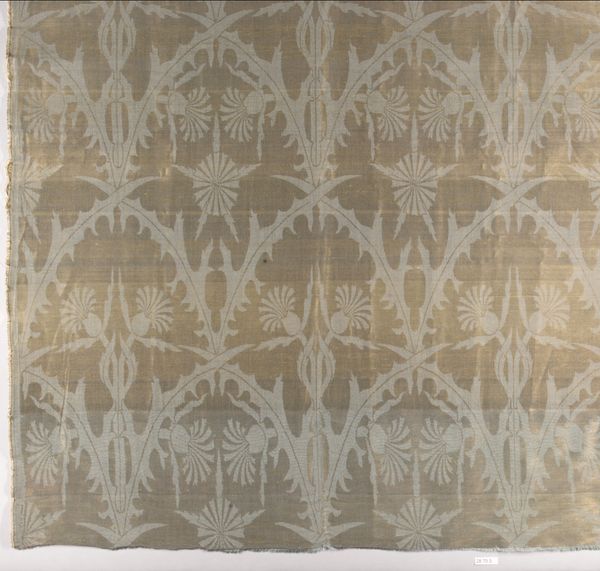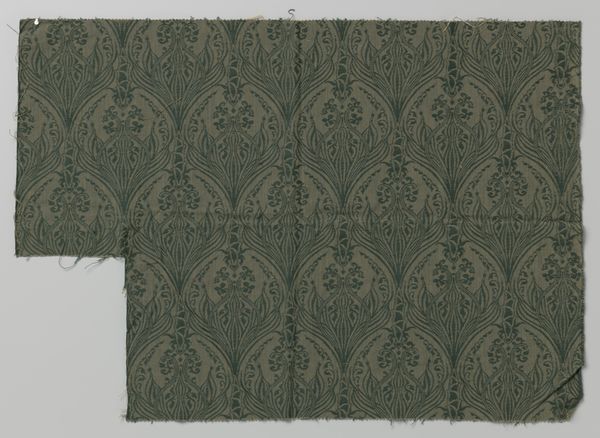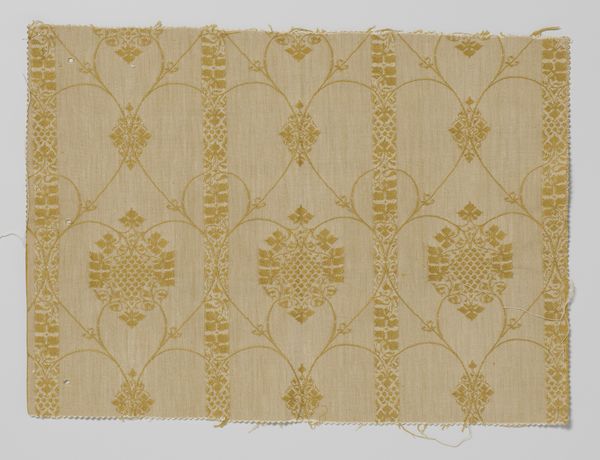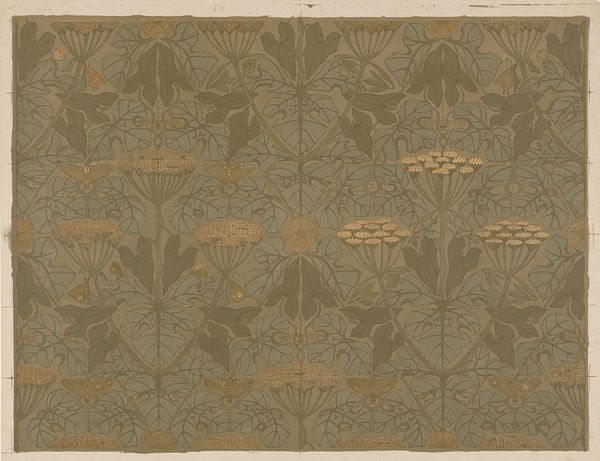
Behangpapier met kleine bladeren, vlinders en libellen 1876 - 1951
0:00
0:00
theonieuwenhuis
Rijksmuseum
#
natural stone pattern
#
pastel soft colours
#
muted colour palette
#
flower
#
nude colour palette
#
fabric design
#
vertical pattern
#
textile design
#
imprinted textile
#
layered pattern
#
soft colour palette
Dimensions: height 658 mm, width 854 mm
Copyright: Rijks Museum: Open Domain
Editor: This is "Behangpapier met kleine bladeren, vlinders en libellen," or "Wallpaper with small leaves, butterflies and dragonflies," dating from between 1876 and 1951. It's anonymous, and held at the Rijksmuseum. It strikes me as incredibly calming, with its muted palette and repeating patterns. How do you interpret this design, considering its historical context? Curator: What resonates for me is how seemingly innocuous designs can reflect, and even subtly reinforce, existing power structures. Think about the rise of wallpaper during that period; it coincided with increasing industrialization and urbanization. To what extent could this be seen as a strategy for taming interior spaces in a rapidly changing world? Does the ordered, repetitive pattern reflect a desire to control and domesticate nature, mirroring broader societal impulses? Editor: That's fascinating! I hadn't considered the act of wallpapering as a form of control. The floral motifs, then, become less about appreciating nature and more about… conquering it? Curator: Precisely. And let’s also consider the gendering of domestic space. Wallpaper was primarily used in homes, spaces often associated with women. Do you think the aesthetic—the pastel colors, the delicate insects—might play into prescribed ideals of femininity during the period? Editor: So the wallpaper might be subtly reinforcing societal expectations for women through its design? I can definitely see that. What would be considered traditionally feminine elements could contribute to restricting the identity of women. I initially saw it as just a beautiful pattern. Curator: It's both. It highlights the layers of meaning inherent in design. Understanding these layers provides a richer, more critical lens through which we can view everyday objects. Editor: I'll never look at wallpaper the same way again.
Comments
No comments
Be the first to comment and join the conversation on the ultimate creative platform.
